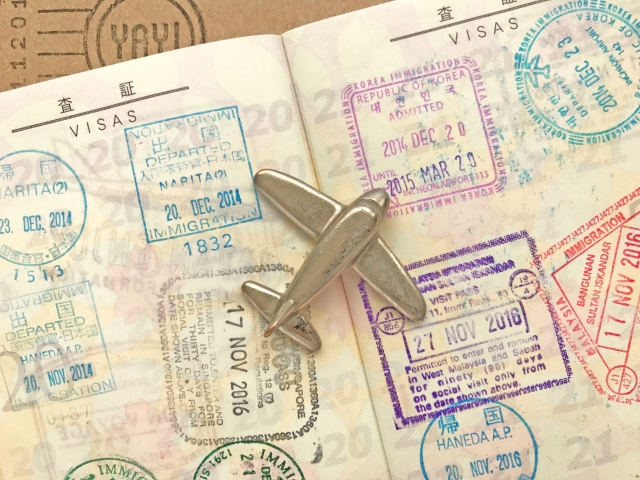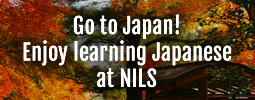 Visas Required for Entry and Immigration
December 11, 2019
Visas Required for Entry and Immigration
December 11, 2019

Entry into other countries basically requires both a visa and a passport.
The first thing that is essential for passage into a foreign country is a passport. Without a passport, you will be unable to leave Japan. However, even though you’re able to leave Japan with just a passport, you may not be able to enter other countries. A “visa” is a document which allows entry to specific foreign countries, like an entry permit. Once a visa is issued, it is attached to your passport.
Visas are split into many different types. We will be explaining the different kinds of American visas. The two main categories are “Non-immigrant Visas” and “Immigrant Visas”.
A Non-immigrant Visa is a visa that allows you to stay in the United States for a specified period of time to accomplish a specified purpose. This is applicable for those who are tourists, students, businesspeople or special workers etc.
An Immigrant Visa is a permit to allow you to reside in the United States on a Green Card or after applying to be an American citizen.
Usually, those studying abroad will be under the “Non-Immigrant Visa” category. Non-Immigrant Visas are divided into various types according to the purpose of the traveller.
Commercial/Tourist Visa (B1/B2 Visa): Short-term entry visas for business, travel or medical treatment purposes.
Employment Visa (H1, L, O, P, Q Visa etc): Visas that permit legal employment. These are visas for working within the United States. Depending on the type of work, these visas are split into different types; e.g. special skilled laborers, internal transfers, artists, entertainers, athletes etc.
Student Visa (F1/M1 Visa): Visas for studying abroad.
Exchange Visitor Visa (J Visa): A visa for those participating in exchange programs such as training programs and internships etc.
Transit/Cruise Visa (C/D Visa): Visas for the staff and crew of planes and ships entering and landing in America.
Religious Activist Visa (R Visa): A visa for those undergoing religious activities.
Employee Visa (B, A, G Visa etc): Visas for those travelling with an employer; these are divided according to the visa status of the employer. This applies to people such as butlers, drivers, housekeepers, assistants, gardeners, diplomats and government officials etc.
Press Visa (I Visa): A visa for news media (who are based in foreign countries) to temporarily stay in the United States.
Treaty Trader/Investor Visa (E Visa): A visa for residents of countries that have treaties and investments with America.
Spouse Visa (K Visa): A visa for those who are engaged to a U.S. citizen and wish to gain permanent residency in America.
You will need a visa that matches the purpose of your stay in the United States.
Generally, to study abroad, apply for a Student Visa (F1 or M1 Visa).
All visas have specific accompanied documents.
For example, the J Visa has the DS-2019 document, and the H Visa has the I-129 document. In the case of the student visas, this document is called the I-20 form.
Both the F1 and the M1 are Student Visas.
For general university and language school studies, you’ll need the F1 Visa. For specific professional studies or training, computing, IT classes etc, you’ll need the M1 Visa. Students who attend the New York English Academy will have an F1 Visa.
When entering the United States, you must go through Immigration. (Specific to the JFK airport)
The procedure for entering the United States is as follows:
- Arrival of the plane
- Immigration
- Baggage collection
- Customs
- Airport arrival lobby
Go through Immigration once your plane has landed. This will be split up into two lanes, one for American residents and one for foreign residents. Line up in the lane for Non-US Citizens.
Immigration at the JFK Airport in New York City has kiosks. (Some other airports may not have kiosks)
The John F. Kennedy Airport is a large airport which serves as the gateway to the East Coast of the United States, with many international visitors. The “APC KIOSK”, or Automatic Passport Control Kiosk, has been implemented to cut down on immigration.
<Immigrants who can use the kiosks> Those who can use the kiosks do not need a customs declaration form.
- People who have an ESTA and have entered the U.S. after 2008
- U.S. citizens
- Permanent residents of the U.S.
- Canadian citizens
<Immigrants who cannot use the kiosks>
- People entering for the first time with an ESTA
- People who have entered with an ESTA after 2008 but have renewed their passport
- People on a student or work visa
- People who have been directed by personnel to use the immigration desk
[Using the Kiosks]
- Choose your language
- Scan your passport on the screen
- Answer the U.S. Customs questions
- Answer ‘yes or no’ for ESTA registration
- Fingerprint scan
- Photo taken
- Confirm travel companions
- Confirm arrival flight information
Once everything has been completed, a receipt will be printed, and you will need to line up for Immigration. This is a simple lane just for showing your documents, and it means there are no issues with your entry. However, if there is a cross on the printed receipt, you will need to proceed to the same in-person immigration examination as other visa holders.

Sometimes this cross is displayed if your photo or fingerprints are not taken correctly.
Immigration Procedures
For immigration, you will need a passport containing the correct visa, and the accompanying documents for that specific visa. (In the case of a Student Visa, the I-20 form). Submit these to the immigration officer.
Having a visa does not necessarily mean you can enter the country. The immigration officer will allow your entry by checking your visa type, your purpose for visiting, and whether or not your documents have expired. At this time, the immigration officer may ask you some questions.
- Purpose of visit
- How much money you have
- How long you plan to stay
- Where you will be staying
If nothing is checked, the immigration procedure is over. If there are any issues or some of your documents are missing, more checks will be necessary, and you will be led into a separate room. This procedure will take a considerable amount of time, so please ensure your documents are completed prior to immigration.
Please refer to the following video for an explanation.
Please note that circumstances and procedures will differ with each airport.
Once you have gone through Immigration, collect your luggage and proceed to your destination. The New York English Academy offers “First-Day Immigration Support” as an option. There is also a pick-up service to take you to your accommodation.
*First-Day Immigration Support: We will
pick you up from the airport and take you to your accommodation. Once you have
dropped off your belongings, we will show you around the facilities and areas
you will be using during your time here. This is the recommended option for
those coming to New York for the first time.
Recent entries
- Handling Current Event Stress While Taking Care of Yourself
- New York City This April – How to Stay Entertained While Putting Your English Skills to Use
- The Best Tools that Education Organizations Use to Improve Productivity
- March in New York City – Staying Entertained While Working on Your English
- Navigating an Ongoing Pandemic in New York City
Category
Archive
- April 2022
- March 2022
- February 2022
- January 2022
- December 2021
- November 2021
- October 2021
- September 2021
- August 2021
- July 2021
- June 2021
- May 2021
- April 2021
- March 2021
- February 2021
- January 2021
- December 2020
- November 2020
- October 2020
- September 2020
- August 2020
- July 2020
- June 2020
- May 2020
- April 2020
- March 2020
- February 2020
- January 2020
- December 2019
- November 2019
- October 2019
- September 2019
- August 2019
- July 2019
- June 2019
- May 2019
- April 2019
- March 2019
- February 2019
- January 2019
- December 2018
- November 2018
- October 2018
- September 2018
- August 2018
- July 2018
- June 2018
- May 2018
- April 2018
- March 2018
- February 2018
- January 2018
- December 2017
- November 2017
- October 2017
- September 2017
- August 2017
- July 2017
- June 2017
- April 2017
- March 2017
- February 2017
- January 2017
- December 2016





